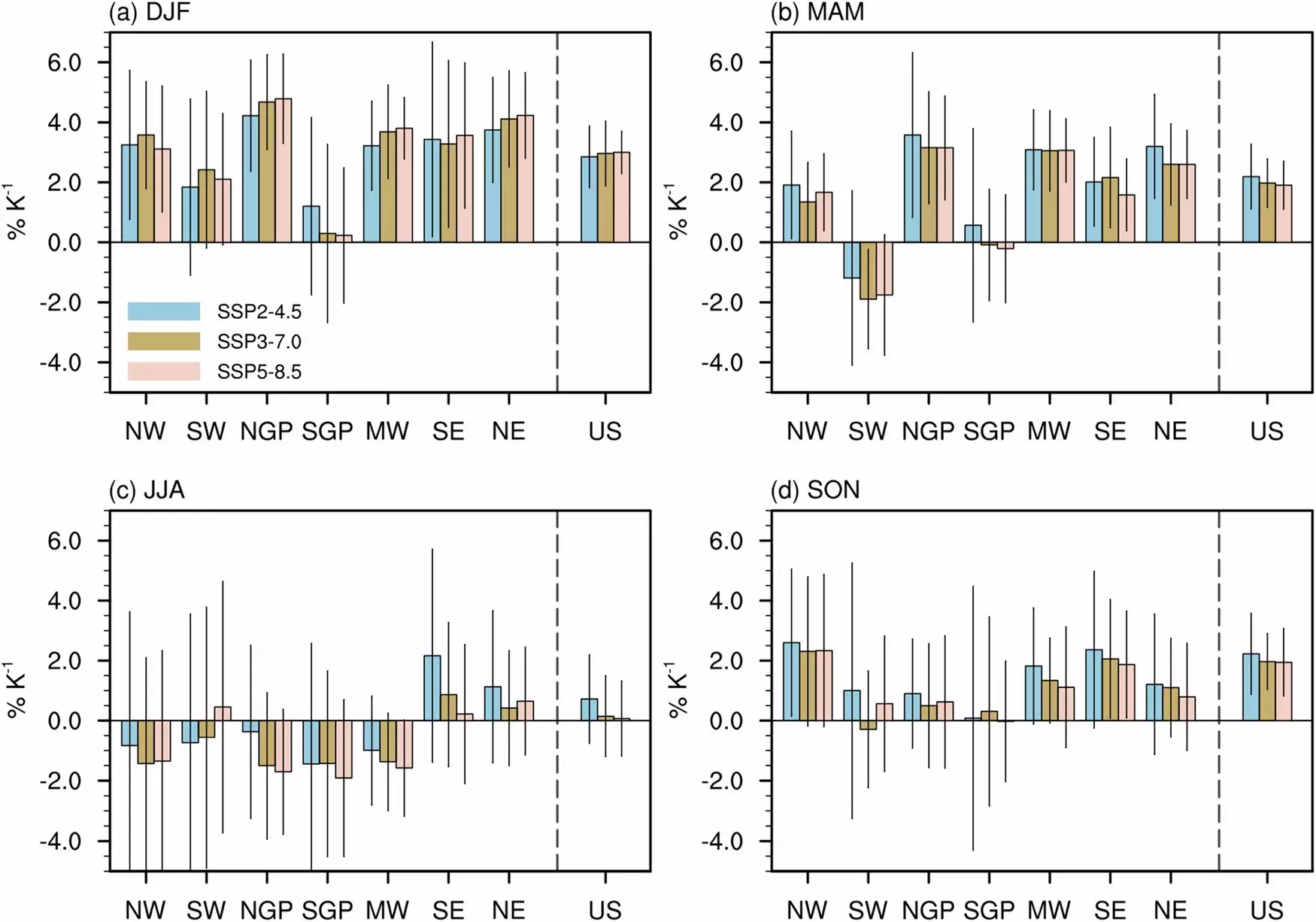As climate change continues to unveil its far-reaching effects, new research indicates that Americans can anticipate increasingly wet winters. A study spearheaded by Akintomide Akinsanola from the University of Illinois Chicago reveals how winter precipitation patterns are expected to evolve by the close of the 21st century. The analysis provided insights into both the frequency and intensity of winter weather events, demonstrating that the nation is in for a shift that could redefine how we experience this season.
As we delve deeper into these findings, it becomes clear that average winter precipitation will see an uptick across a majority of the United States. Akinsanola’s work is a clarion call, drawing attention to the imminent shift from historical weather patterns to extreme conditions, potentially altering the landscapes of agriculture and water resource management.
One of the most alarming outcomes of the study is the anticipated rise in “very wet” winters—those winters whose precipitation totals land in the top 5% historically recorded. The research indicates that these extreme winters, which have been relatively uncommon, could occur as frequently as once every four years in certain areas of the country by 2100. This increase poses numerous challenges, especially since many regions, traditionally used to snowy winters, may experience a transition toward rain. The implications are critical, as the delicate balance of ecosystems, water supply, and agricultural practices face new pressures under these changing conditions.
Akinsanola pointed out the notable contrast between summer and winter precipitation trajectories. While summer weather patterns show considerable uncertainty concerning changes, winter precipitation is projected to undergo substantial intensification. As scientists closely monitor these shifts, there is a collective recognition that winter holds a unique position in the dialogue about changing climate patterns.
The study, which utilized 19 Earth system models, examined seven U.S. subregions as classified in the National Climate Assessment Report. Findings suggested a national average increase of 2%-5% in winter precipitation per degree Celsius of warming. Notably, the Northwest and Northeast U.S. are predicted to witness the utmost increases in winter precipitation. The Midwest and Northeast will experience an upsurge in the frequency of these extreme weather events, revealing critical areas where infrastructure may falter if unprepared for these changes.
Conversely, the southern Great Plains, which includes states like Texas and Oklahoma, demonstrate more moderate and uncertain projections regarding winter precipitation. Interestingly, in this region, the rise of extreme wet events could be counterbalanced by a corresponding uptick in extreme dry events. This geographical variability underscores the importance of localized studies to address unique regional impacts separately.
The anticipated shifts in winter precipitation will undeniably necessitate a reevaluation of existing infrastructure. With increasing rain and diminishing snowpack, the pressure on drainage systems heightens, requiring significant upgrades and improvements to mitigate potential flood risks. Akinsanola pointed out the urgency in modernizing our building and infrastructure designs to better withstand these predicted extremes.
As this research unfolds, the implications for various sectors become increasingly evident. Higher-resolution models are on the horizon, promising a more detailed understanding of future precipitation patterns, heat waves, and their intersection with other extreme events. Such localized predictions are vital for stakeholders, policymakers, and communities alike, as they forge strategies to adapt to a changing climate.
The study led by Akintomide Akinsanola sheds light on critical shifts in winter precipitation patterns that Americans will face in the coming decades. The predicted increases in extreme weather events and alterations in seasonal precipitation stand to impact agriculture, water resources, and infrastructure throughout the nation. This research serves as a vital reminder of the adaptive measures needed to navigate the uncertain climate future ahead. As we face these challenges, proactive planning and investment will be paramount in preparing for winters that are markedly different from those we know today.


Leave a Reply